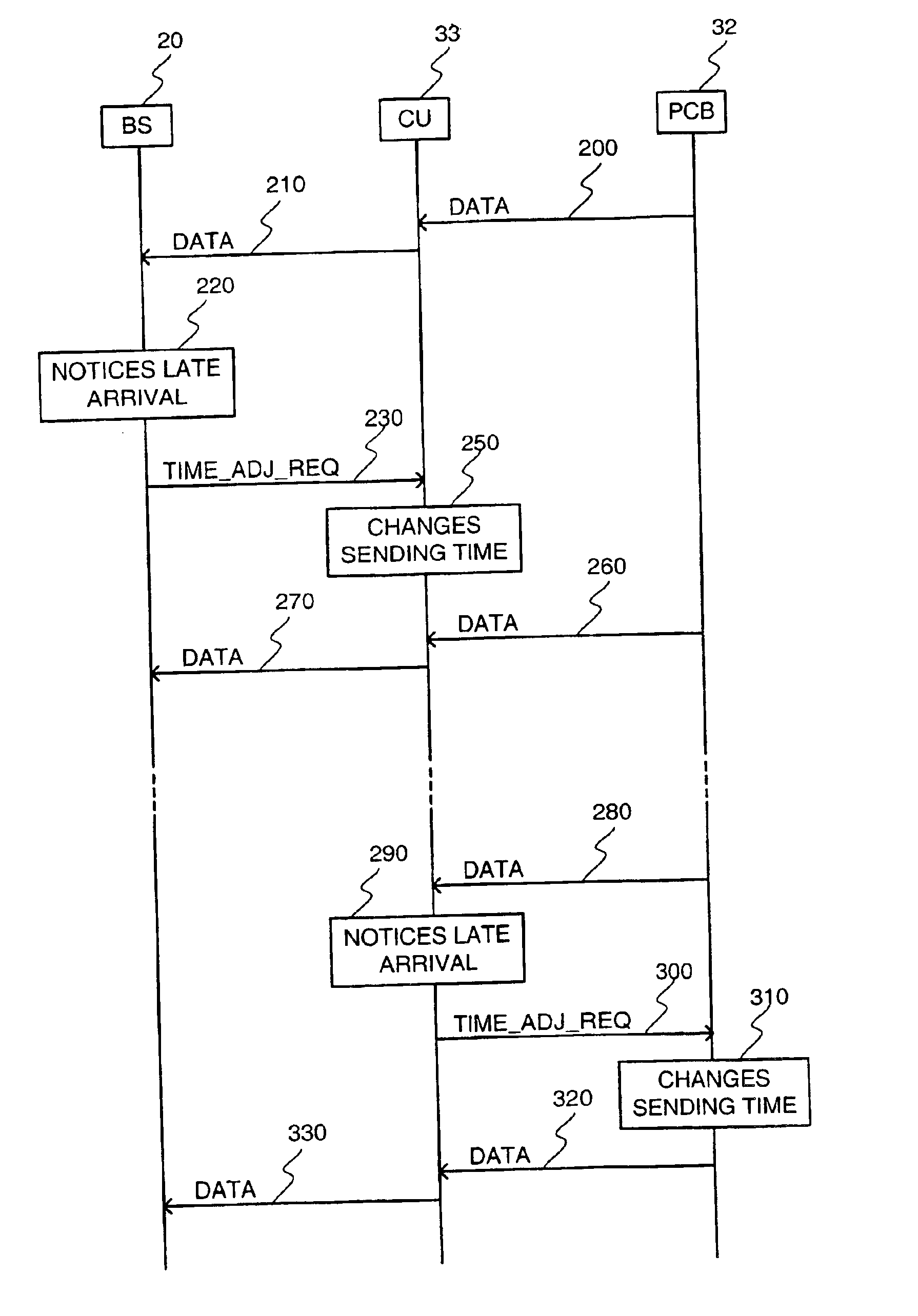Delay control method
- Summary
- Abstract
- Description
- Claims
- Application Information
AI Technical Summary
Benefits of technology
Problems solved by technology
Method used
Image
Examples
Embodiment Construction
Adjustment of Delays in the Downlink Direction
[0024]In the downlink direction, the delays are adjusted as follows according to an advantageous embodiment of the invention. If an entity, herein called the receiving entity, receives packets too late for one or more bearers, or if packets are received too early, before a certain predefined point in time, the receiving entity informs the entity preceding it in the downlink direction in the transmission path about the inaccurate timing. As a response, the preceding entity adjusts the transmission time of the packets to bring the arrival time of the packets to the receiving entity closer to the desired arrival time. In case the preceding entity cannot send the packets earlier due to the arrival time of packets to the preceding entity, the preceding entity may also inform the entity before it in the downlink direction of the transmission path, that the packets are received too early. Preferably, this mechanism of informing and adjustment i...
PUM
 Login to View More
Login to View More Abstract
Description
Claims
Application Information
 Login to View More
Login to View More - R&D
- Intellectual Property
- Life Sciences
- Materials
- Tech Scout
- Unparalleled Data Quality
- Higher Quality Content
- 60% Fewer Hallucinations
Browse by: Latest US Patents, China's latest patents, Technical Efficacy Thesaurus, Application Domain, Technology Topic, Popular Technical Reports.
© 2025 PatSnap. All rights reserved.Legal|Privacy policy|Modern Slavery Act Transparency Statement|Sitemap|About US| Contact US: help@patsnap.com



